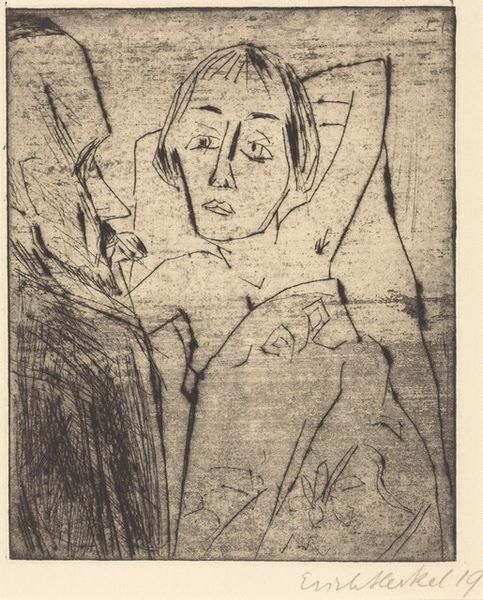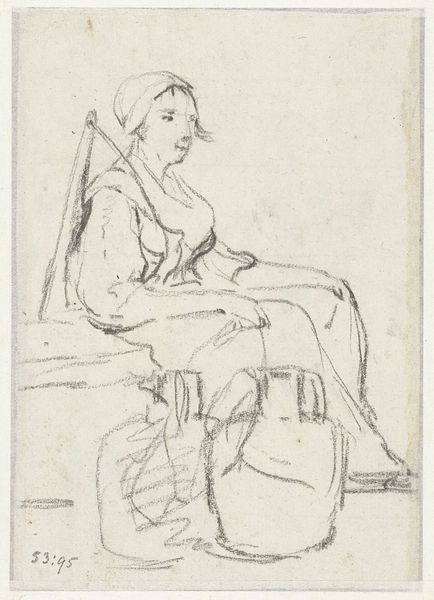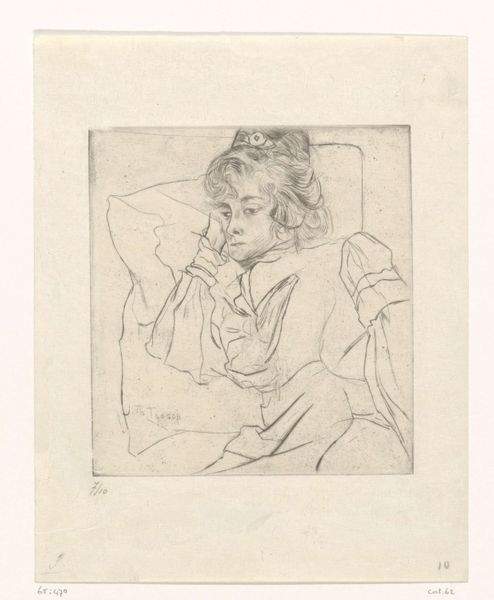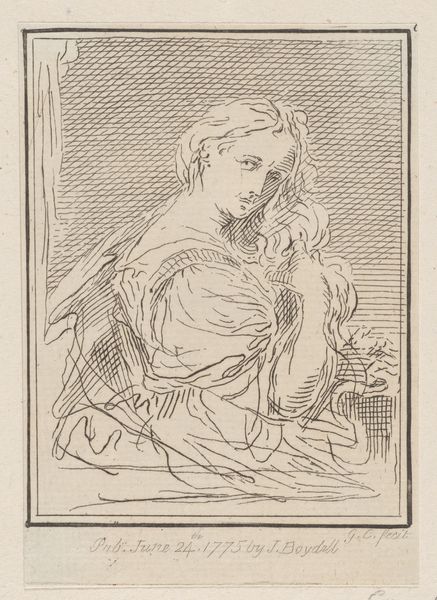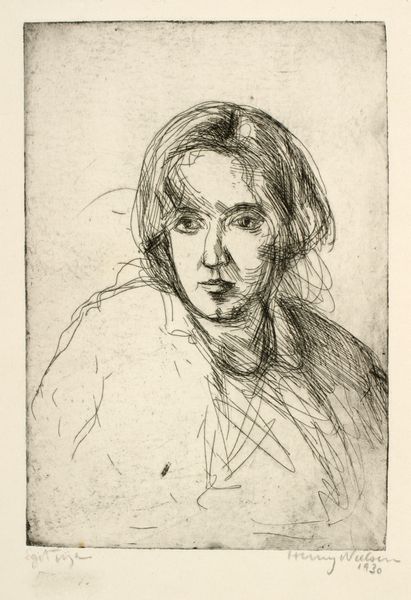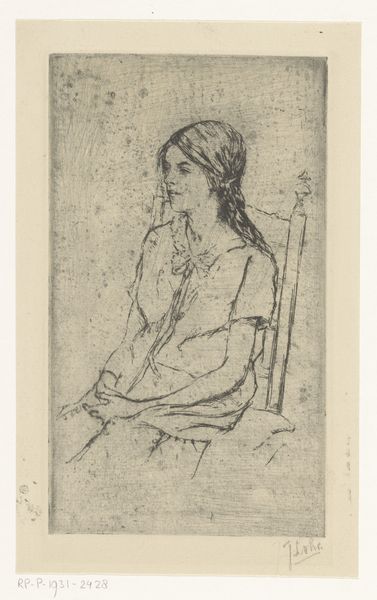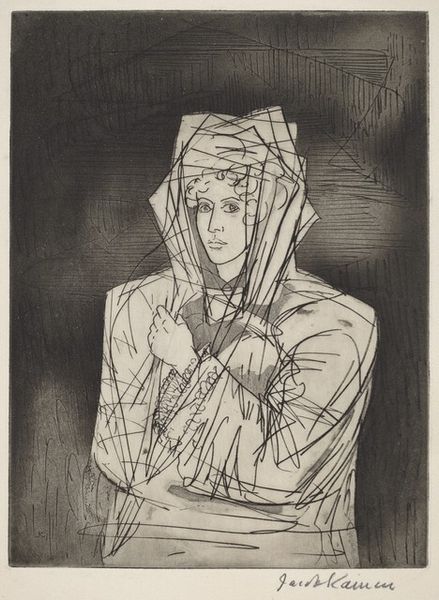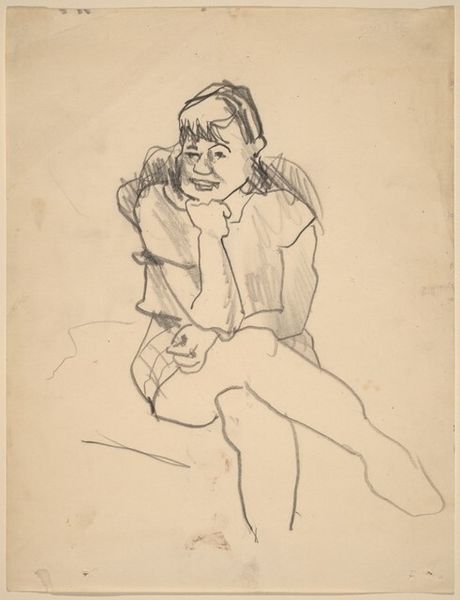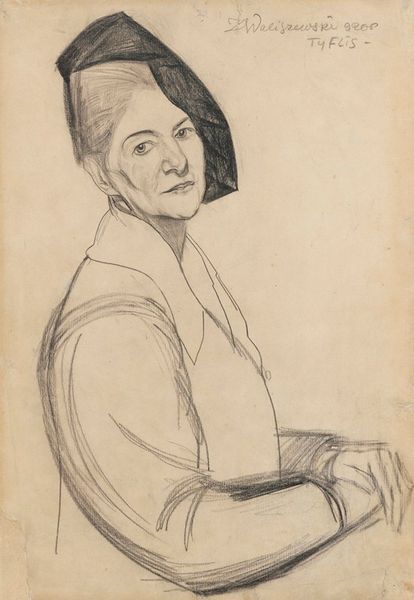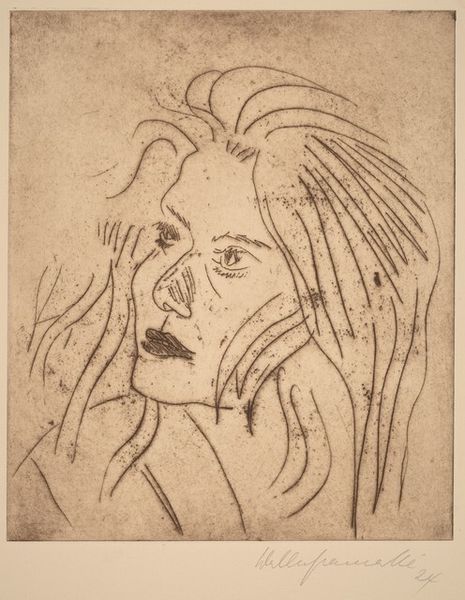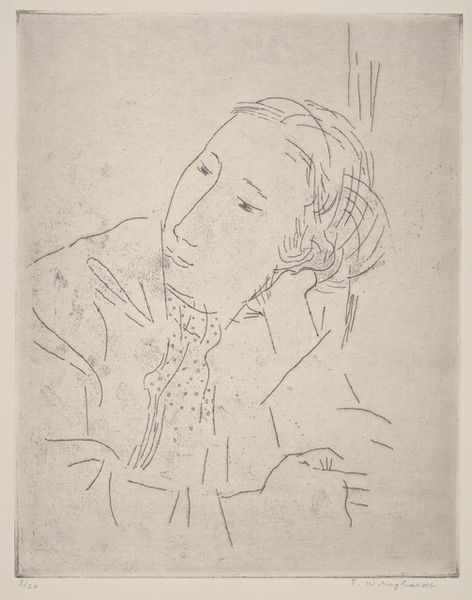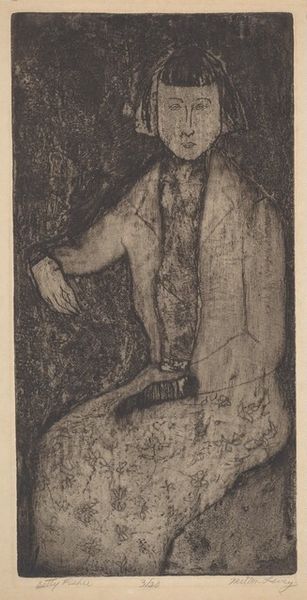
drawing, print, etching
#
drawing
#
toned paper
# print
#
etching
#
pencil sketch
#
figuration
#
line
#
portrait drawing
#
academic-art
#
realism
Dimensions: image: 225 x 150 mm paper: 316 x 241 mm
Copyright: National Gallery of Art: CC0 1.0
Curator: Before us, we have Howard Daum's "Theresa," an etching and print completed in 1944. It presents a seated woman in simple lines, a jacket casually draped over her shoulders, rendered on a subtly toned paper. My first thought is that her gaze makes me feel a bit like I walked in on a very personal, maybe even slightly sorrowful, moment. Editor: I am immediately struck by the graphic nature of it, a result of it being a print no doubt; it's interesting how the lines define form but don’t quite describe mass. Notice the paper; the texture seems almost integral to the work itself. We’re not just looking at an image, but engaging with a carefully constructed object born of particular material conditions and a printing process that, frankly, looks painstaking. Curator: Exactly, the academic line style captures the likeness in a way that’s direct but also dreamlike, maybe unfinished? The woman’s thoughtful posture—her hand raised to her face—emphasizes the inner life the artist seems to suggest. It’s representational art that is more concerned with capturing an inner truth than achieving absolute photographic accuracy, in my opinion. What is your opinion on its relationship with labor considering its medium? Editor: Well, etching is physically demanding. The way the image is built through controlled, repetitive mark-making speaks volumes. Think of the acid baths eating away at the plate, the pressure required for printing…It's this intricate, step-by-step process, really emphasizing the artist’s craft and control. What's the social context? Did Daum make similar prints or series during that time period? Curator: That’s an insightful point, understanding that Daum lived in a society facing upheaval due to World War II can definitely reshape how we think about the intimacy and care that can be extracted from the act of observing someone. It suggests how important those quiet, human moments became as an affirmation of shared connection during great crises, that these seemingly banal gestures mean so much more. Editor: Exactly! So "Theresa" becomes more than just a portrait. The piece becomes a document—it represents a certain investment of time, materials, labor that has much broader implications about life in 1944. Curator: Mmm, that process helps unlock these other ideas in my mind now. Now, when I think about Theresa, I keep being reminded that a fleeting moment could last forever in the eye of the artist and the hand that carved and printed the work we see before us. Editor: Absolutely. Thinking of it less as some "high art" treasure, and more like this physical embodiment of careful intention. I think that is worth our thought and observation for longer than we've allowed ourselves.
Comments
No comments
Be the first to comment and join the conversation on the ultimate creative platform.
